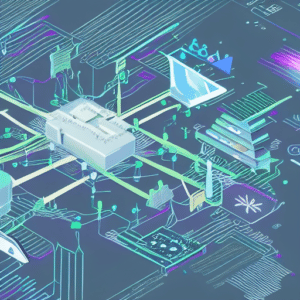Blockchain technology has enabled a new type of governance model, known as a decentralized autonomous organization (DAO). DAOs are entities that allow groups of people to work together and govern themselves online using tokens and smart contracts (programs that execute transactions based on predetermined conditions).
In this article, we will discuss how DAOs are different from traditional organizations. We will then examine the types of DAO governance models. Finally, we will explore the key characteristics of DAO governance structures and the potential challenges that can arise with these structures.
Overview
The Web3 Research Institute is reader-supported. When you buy through links on this site, we may earn a commission at no cost to you.
DAOs vs. Traditional Organizations
DAOs differ from traditional organizations in how they are designed and managed. For example, they have a reduced hierarchy and safer payment management capabilities.
Organizational Hierarchy
Unlike the top-down decision-making process of traditional organizations, all members of a DAO help make decisions. To become a DAO member, a person just needs to buy tokens. They use their tokens to put forward and vote on proposals. Votes are executed as blockchain transactions, and consensus mechanisms enforce the decisions.
Payment Management
Unlike traditional organizations, DAOs can ensure that payments are safe and secure. This is because DAOs use self-executing smart contracts to make payments. They do not need to involve an intermediary.
In contrast, traditional organizations need to involve banks or other financial transactions to make payments. This makes payments susceptible to financial crimes and fraudulent transactions.
DAO Governance Models
There are two types of DAO governance models: permissionless and permissioned.
The Permissionless DAO Governance Model
Permissionless DAOs do not have a formal process that limits who can join. Everyone who follows the rules and owns tokens can contribute to the DAO. This type of DAO includes open networks and token economies like Ethereum.
The Permissioned DAO Governance Model
Permissioned DAOs require approval to join. This type of DAO is typically used in business or government settings where there is a need to limit who can participate.
For example, this type of DAO could eliminate the need for traditional corporate structures, such as boards of directors or executive officers. It could also reduce the need for traditional government structures, such as legislatures and judiciaries.
Key Characteristics of DAO Governance Structures
Both types of DAOs have the same structures for governance: decentralization (meaning that there is no central authority) and autonomy (meaning that they are self-governing). This means they share the following characteristics:
DAOs enable people to coordinate and govern themselves online.
A DAO is a group of people who work together to achieve a common goal. The size of the group and the type of goal do not matter, as long as the DAO remains independent from central control.
DAOs are deployed on blockchains with smart contracts.
All DAOs rely on blockchain technology, which gives them some of the same characteristics. These include transparency, cryptographic security, and decentralization.
Smart contracts specify how DAO members can communicate.
All DAOs use smart contracts to define rules and make decisions. Smart contracts are executed automatically, so nobody can unilaterally change the group’s rules or decisions. It is often unclear, however, how other governance mechanisms could override smart contracts.
Ongoing Debates Over DAO Governance Structures
There are still many unresolved issues in the discussion around DAOs because they are new. For example, it is still unclear how DAOs should establish decentralization, ensure autonomy, and use smart contracts.
Decentralization
When it comes to decentralization within a DAO, there is some disagreement about how much decentralization is necessary. Some people think that decentralization only needs to happen at the infrastructure level, meaning that the blockchain-based network should be decentralized. Others think that decentralization also needs to happen at the governance level, meaning that no single entity should control the DAO.
Autonomy
Some people think that a DAO must be fully autonomous, meaning that it must run without any human intervention. Others think that the concept of autonomy should be interpreted more loosely, meaning that a DAO should still be able to run even if some people are helping the group make decisions.
Smart Contracts
There is some discussion about when a group of people who interact with a smart contract can be considered an organization. This is still unclear, but it might require more involvement than just interacting with the smart contract. For example, a DAO might need a formal governance model before it can be considered an organization.
Potential Challenges with DAO Governance Models
There are three potential challenges with DAO governance structures today:
Security Vulnerabilities
DAOs use smart contracts to conduct monetary transactions. This means that the money a DAO holds is only as safe as the code used to create its smart contracts. For example, in 2016, someone took advantage of a security flaw in the code for the The DAO project and stole about $150 million worth of Ether.
Self-Executing Smart Contracts
One possible problem with DAOs is that faulty data could be recorded on a blockchain. This could cause problems such as a smart contract unintentionally triggering payment to a vendor.
Legal Considerations
At this time, it is still unclear how legal systems will treat DAOs. However, in July 2021, Wyoming passed a law that allows certain DAOs to incorporate as limited liability companies, giving them some legal protection.
Final Thoughts
DAOs present a unique and innovative way to create and manage organizations. They have the potential to completely change how we think about organizational structures and governance models.
However, as with any new technology, there are bound to be challenges that arise. It will be interesting to see how DAOs develop over time and what kinds of innovations they bring to the world of organizational governance.
Related Articles

Are DAOs a Scam?
This article compares DAOs with traditional organizations to determine whether they are a scam or a legitimate governance model.
